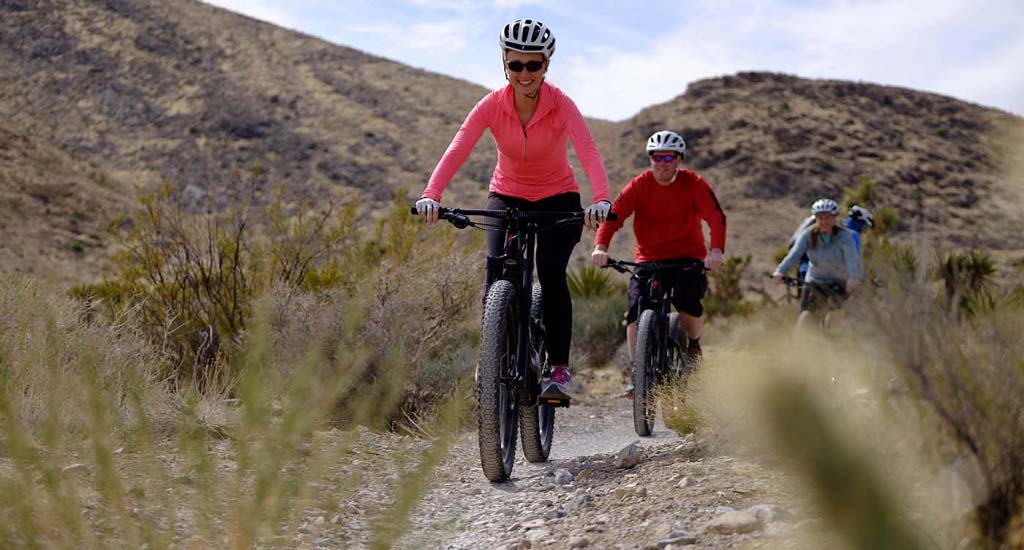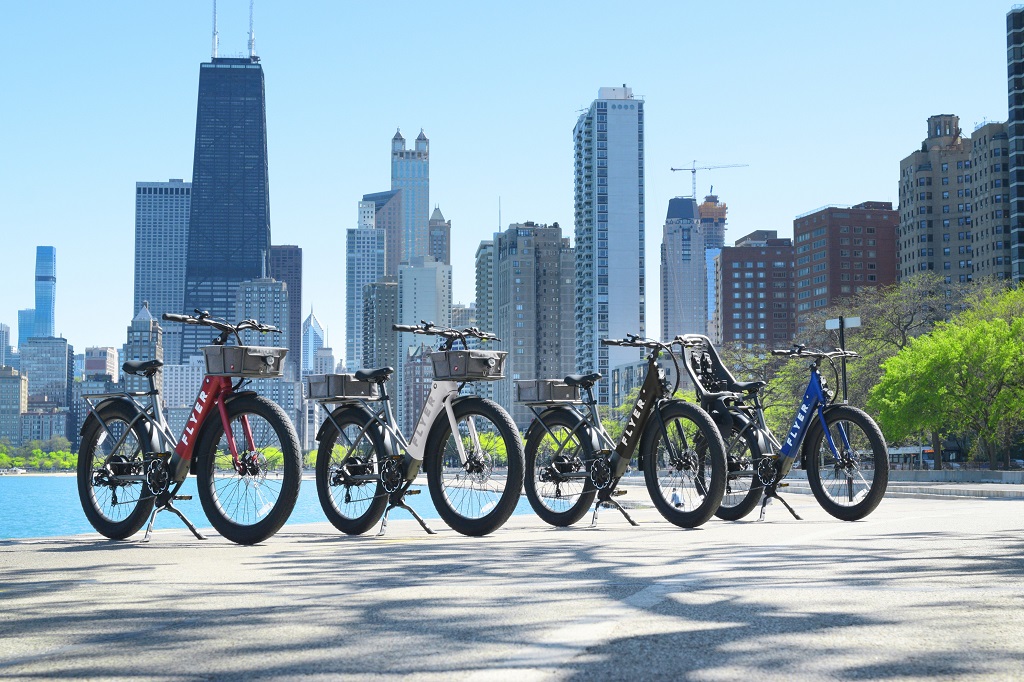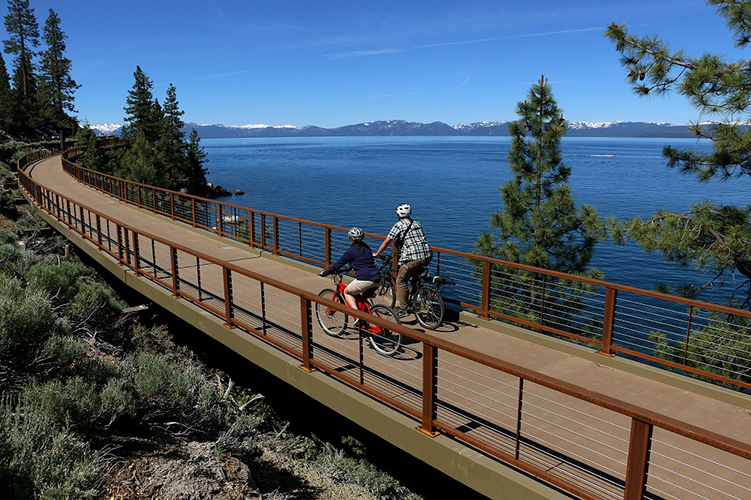LEVA: U.S. e-bike sales should top 1 million in 2021, 3 million in coming years

Guest post by: Ed Benjamin, chairman of the Light Electric Vehicle Association This post was previously published on LEVA’s website and is being reposted here for our audience.
The United States tends to make changes slowly until a tipping point is reached. And then, change can be startlingly fast.
That tipping point has occurred with electric bikes in the last two years. We are on our way to becoming the most profitable and largest western market for electric bikes.
For nearly 23 years, the U.S. electric bike market was tiny compared to the Asian and even the European electric bike market. For each of those years, I would assure my clients, readers, and peers that the U.S. will — eventually — be one of the largest markets for e-bikes and pedelecs.
Growth was slow, partly because the bicycle industry of the U.S. is focused on sport, fitness and recreation, and for years the electric bike has been regarded as primarily a transportation tool. Two wheelers as transportation has been a very small business.
Read more: Bike Mechanics Should Become LEVA Tech Certified, Or Risk Being ‘Left Behind’
But now… the limit on the U.S. market is the performance of the supply chain. U.S. brands will take almost any electric bike they can get and sell it almost as soon as it is received. Unfortunate lead times — as much as two years — are the problem.
What changed?
- The products have become much more reliable and stable. Today’s electric bikes, even the inexpensive ones, work quite well. The best ones are a delight.
- The legal status of electric bikes has become much more clear, allowing consumers, government, brands and suppliers to understand better what to make and how to use it.
- eMTBs fit nicely into the American ideas of bicycles as sport, fitness, and recreation. And they extend the off road access to many, especially older, riders.
- Some brands have focused on market segments that are uniquely suitable for electric bikes. Examples are Pedego’s focus on aging baby boomers, and eCells focus on two wheel drive off road bikes, or QuietKat’s focus on hunting.
- Bicycle retailers have learned that e-bikes make money for them and can be sold easily, with minimal service problems.
- Almost every traditional bicycle brand now offers electric bikes, making them accessible to dealers via their credit line.
- The non-traditional electric bike companies that sell direct to consumers have become both expert at this, and very successful. The largest unit brands are direct-to-consumer.
- Simpler, more reliable service issues combined with training from the makers of bikes, the makers of propulsion systems and the Technician Training Program offered by the Light Electric Vehicle Association have made service support more available.
- Propulsion system suppliers have developed products specific to the higher power allowed in the U.S.
- Electric bikes do provide an exercise benefit, allowing the rider to stay in motion longer and to ride in more interesting places.
- Personal transportation in the U.S. has been cars for a long time. But now we have cities with no room for parking, people who prefer to not own a car due to cost or personal commitment to environmental issues.
- In dense cities, where transport has been the metro, the bus or train, COVID-19 has pushed consumers to look for personal transportation that avoids crowds.
- COVID has also pushed the people of the U.S. to rethink many things; to look for alternatives and consider new ideas.
The most important change, however, is this: There is wide understanding by U.S. consumers of the reasons that electric bikes can be fun and improve their lives. And this understanding is across a much broader group than the traditional buyers of quality bicycles. Motors are well regarded by U.S. culture, despite the prejudice of cyclists.
Related: Are Electric Bikes Cheating? We Asked the CEO of Bianchi USA
There are some barriers yet to overcome

But with each barrier that falls, sales will increase.
- The majority of the 50 states have adopted laws that help the consumer, the dealer and the industry understand exactly the role and use of electric bikes. This is due to the work of People for Bikes. Their work has been very important to the expansion of the market, and they should be supported by the entire industry. But not all states have adopted the model legislation and finishing this work is important to future business.
- Most U.S. bicycle industry people, at every level, (but especially in the bicycle shop) have a cultural resistance to bicycles with motors. Most such staff are former cycling athletes with a history of MTB, BMX, road, triathlon, or track racing. They are comfortable with physical exertion. This is a barrier because they do not instantly understand and sometimes do not accept the idea of an electric bike. And they do not understand the biggest demographic of e-bike customers — the aging, non-cyclist boomer. They do not understand consumers that wish to minimize physical exertion. As this improves, sales will improve.
- The supply chain has not been responsive enough. The explosion in demand for e-bikes worldwide has been a challenge for the supply chain.
- Marketing has been limited and unimaginative for the industry as a whole. There are a few that stand out (Pedego), but most companies fail to create excitement about their product. This is a dangerous situation, for consumers will buy based on price if they do not have inspiration.
Any time an industry experiences explosive growth many new companies arise. For more than 20 years, I have monitored the number of e-bike brands in the U.S. and estimated their sales volume. For years, U.S brands and importers would enter and/or leave the industry, with about 120-130 remaining each year.
In the last two years, this has increased to more than 400.
Most of these will not endure. Like most businesses, the strongest will survive. Many will fail or merge. My prediction is that within 10 years, we will have only 30-40 brands or fewer. Of those, 10 will dominate the sales. Which companies will be the survivors is not clear at this time.
In 2021, if the orders of the brands can be filled in time, the U.S. market will be close to 1 million. In a short few years, the market in the U.S. will reach more than 3 million.
We are now experiencing the bright future that I have predicted for so long.




Juice ebikes have some awesome bikes but lack customer service and tends to forget their old customers they don’t stand by the product.
Ed – you’ve hit the nail on the head.
E-bikes are here to stay, and growth will leave the traditional non-electric bike shops in a world of hurt, if they don’t get with the program. Not only will the 3 million units be achieved annually, but less emphasis will be placed by the traditional brands on the ‘analogue’ bikes , and more on electric bikes, such that sales of analogue bikes will shrink considerably once people realize the electric bike is super easy to ride without any e-assist and can serve both roles of bikes and e-bikes. I would venture to say, that greater numbers of the common components will be steered into the electric assist products, such that the supply chain problems will force more shops to carry more ebikes, simply because they will be able to order and receive ebikes, but will have a harder time getting analogue bikes.
I’ve got my Radrover in February of 2020. It has replaced my pickup truck for all errands with a round trip distance of less than 30 miles. Yours is an excellent report. Thank you.
Thanks, Karl!
You’ve missed out an important barrier to increased takeup and sales – i.e. the lack of strong coherent networks of safe, protected bikeways. Until riders of all ages feel safe and comfortable riding for everyday trips, we will not see mass takeup of riding for transport. This awareness is very slow to develop within the traditional bike industry, who are mostly still focussed on riding for exercise and offroad leisure. The bicycle industry needs to address this strategic gap and build supportive relationships with the governments and not-for-profits who are labouring, with insufficient funds and inspirational promotion assistance, to gain public acceptance for building these safe networks of bikeways.